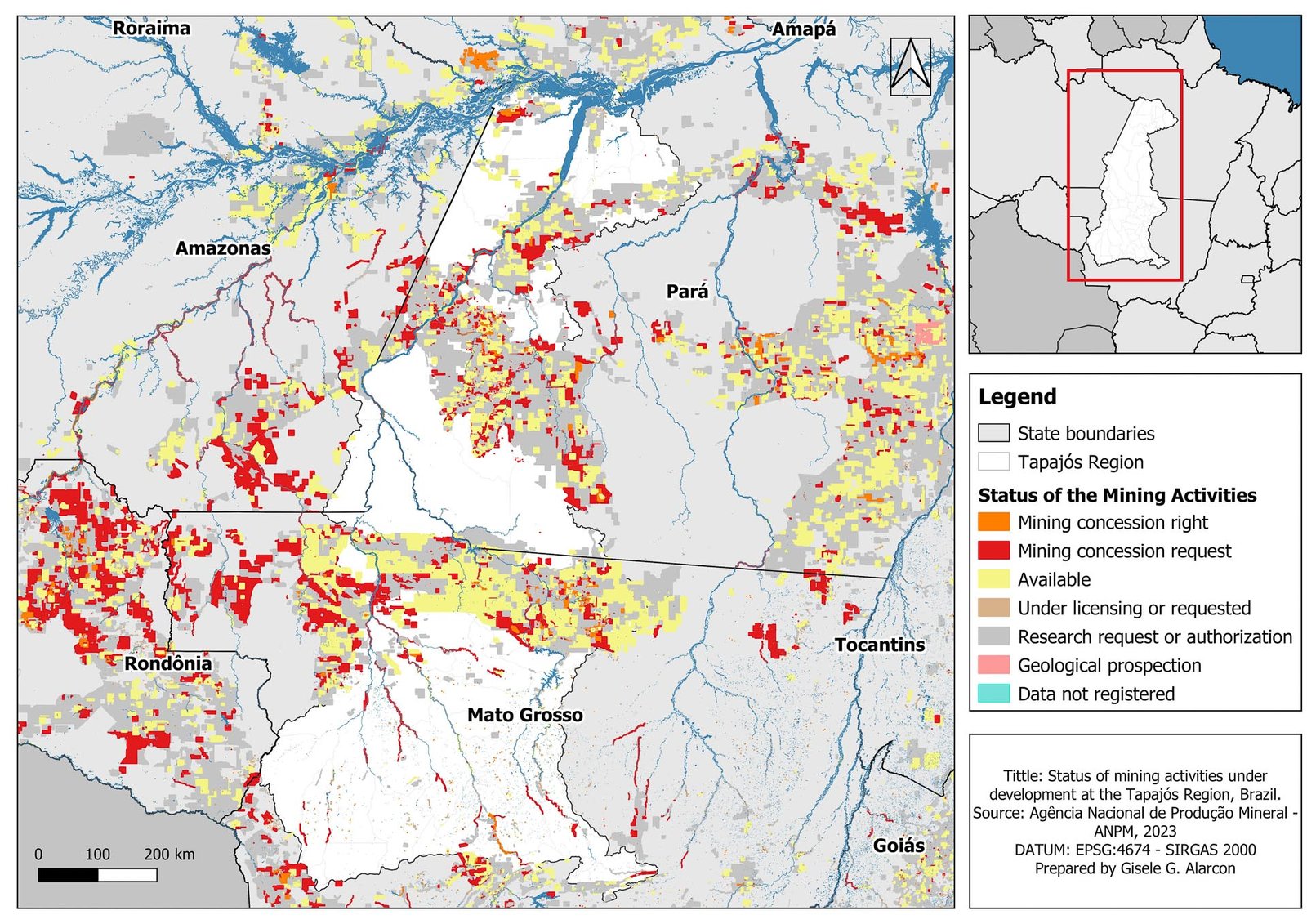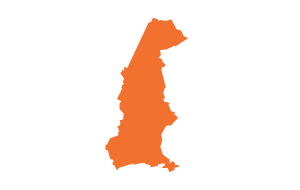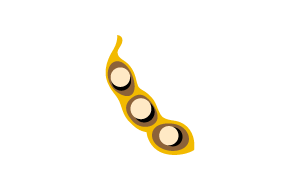GLOBAL COMMODITIES
Gold
Gold in Brazil
The gold value chain in the Brazilian Amazon has its main extraction region in the Tapajós Region, featuring both legal and illegal activities of small and medium scales. The Tapajós Mineral Province (an area of 50,000 km²) saw its first gold discovery in the 18th century. However, effective and continued exploitation began in the late 1950s with the incorporation of air and river transport logistics. From then on, discoveries were made in the rivers Tropas, Tapajós, Crepori, and Jamanxim. The 1970s and 1980s were a period of intense mining activity and migration in the Brazilian Amazon, particularly in the Tapajós Region. The advancement of extraction and transportation technologies, increased investments, and the growth of mineral extraction, along with the associated environmental degradation, led to the gold rush.
Initially, the region was home to low-tech, labor-intensive artisanal mining. The first miners came from the already declining rubber economy, followed by new migrants, especially from the northeastern part of the country. Mining contributed to the expansion of demographic and economic frontiers in the Amazon.
Starting from the 2000s, gold mining activity in the Tapajós Region intensified due to various factors, including a sharp increase in the international price of gold and the greater mechanization of technologies used in the mines. From the 2010s onward, we can add the economic crisis and the actions or inactions of consecutive federal governments to the list of factors.
The increased mechanization of mining, with the use of heavy machinery and reduced labor, characterizes the new gold production chain as being closer to small-scale mining than to artisanal activities, considering the type of technology employed, the level of degradation, and the amount of capital involved.
The photo below depicts the most common gold extraction technique in the Tapajós Region, utilizing a backhoe excavator.
In the state of Pará, where the Tapajós Region is the largest gold producer, the value of gold production in dollars increased nearly 7 times in a decade between 2010 and 2021. This primarily reflects the growth of both legal and illegal mineral production, coupled with the rise in the international price of gold, especially after the Covid-19 pandemic.
According to the Brazilian Agency of Mineral Production (ANPM, 2023), Pará state currently has 4,368 mining concessions and the right to apply for concessions and another 10,032 mining requirements.

Status of the mining activities under development in the Tapajós Region (2023), Brazil.
Gold extraction in Tapajós has been causing a series of socio-environmental damages. Among these, the contamination of the region’s rivers and local populations by mercury stands out; conflicts between miners and indigenous communities involving threats of death and physical violence; illegal exploitation in indigenous lands and protected areas. The protected areas at the highest risk with reported incidents include the Tapajós Environmental Preservation Area, the Munduruku and Sai Cinza Indigenous Territories, and the Crepori National Forest.
Currently, it is estimated that there are approximately 2,500 open-pit small scale mining sites in the Tapajós Region, with 15,000 workers directly involved in the activity. Since 2007, mining has been expanding in deforested areas. In 2020, 7,300 hectares were destroyed by this activity.
Gold in Colombia
Gold mining is an important economic activity in Colombia which has a historical and cultural tradition that dates back centuries. Colombians of pre-Hispanic times used gold for jewelry, art and ceremonial items. In colonial times, Gold was a major good for export. After the country’s independence in the “Gold Rush”, the first Colombian owned mining company was created in Medellin. Still today, mining is an important economic activity generating around two percent of the national GDP and approx. 1,5% of the national employment.
The department of Putumayo does not present a high number of mining licenses if compared to the national distribution. Most gold mining activities are illegal so that in 2019 officially only 44,936 grams of gold were produced in the municipality of Puerto Guzmán. Gold mining has traditionally been undertaken by afro-Colombian settlers who accumulated huge common knowledge of the old practice of gold mining.













